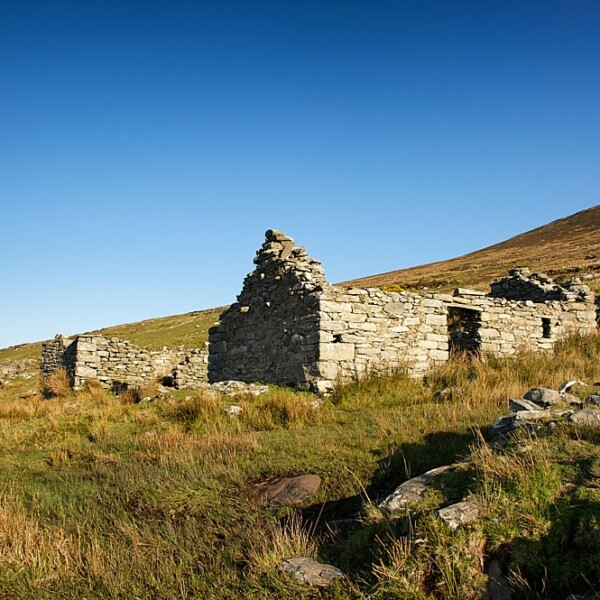Achill’s Deserted Famine Village
On your travels around Achill Island, one feature dominates: the towering Slievemore Mountain.
At 671 metres (2,201 feet), Slievemore is the island’s highest peak. And at its base, you’ll find one of the Achill’s most fascinating and thought-provoking sites: the deserted famine village.
It’s believed the deserted famine village was built around 1750. However, there’s an even longer history of settlement in the area. Archaeological evidence shows that people were living there approximately 5,000 years ago.
Now, the remains of over 80 stone cottages stretch along a mile-long pathway, a monument to the challenging conditions faced by bygone islanders.
Most cottages are in a north-south alignment and have just one room. In winter, families often shared the space with their animals, giving heat to both livestock and humans.
On the Achill Island Day Tour, you’ll have the chance to explore these dwellings for yourself.

The Great Famine and Achill’s Deserted Famine Village
The Slievemore deserted famine village gives us an insight into life during one of the harshest periods of Irish history: the Great Famine (1845-1852).
The tragedy was caused by potato blight, which destroyed the main food source of millions of people. The famine decimated the Irish population. Approximately 1 million people died and another 1 million emigrated. The famine changed the face of Irish society and history in countless ways.
During those tragic famine years, the population of the Slievemore village dropped dramatically. Many moved to other parts of the island for a variety of reasons, the majority to the nearby village of Dooagh.
Booleying at Achill’s Deserted Famine Village
Despite this, village life continued in a different way during the first part of the 20th Century. Many families returned to the mountain cottages in the summer months. This was to graze their livestock on the area’s higher ground – a practice known as booleying or transhumance. It’s believed that Achill was one of the last places in Europe to keep the tradition alive.
The annual Achill Archaeological Field School has carried out valuable research into the site and the way of life of its former residents.


